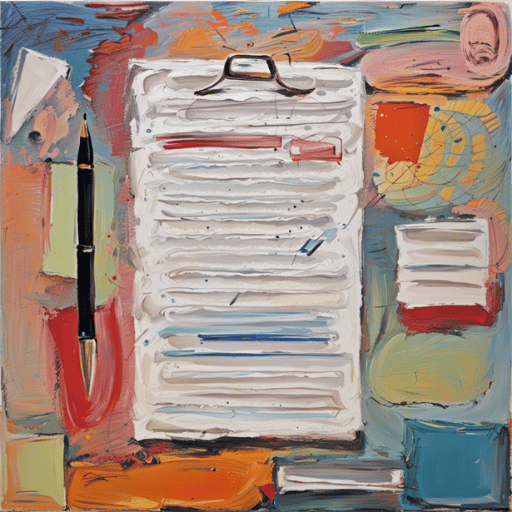Processing Archivist SOPs
Creating Standard Operating Procedures for your Processing Archivist work can be difficult and take time. That’s why we’ve created these example Processing Archivist SOPs so you can jumpstart your SOP creation process. We want to help you set up your Archiving systems and processes by taking these sample SOPs and building out your own SOPs template library. By having all your Archiving procedures in one place, your team will have the information they need at all times. Let’s look at some Processing Archivist SOP examples.
Processing Archivist SOP Examples
1. Accessioning SOP: The purpose of this SOP is to outline the procedures for accessioning new collections into the archive. It includes steps such as verifying the accuracy of donor information, creating an accession record, assigning a unique identifier, and physically organizing the materials. The scope of this SOP covers all incoming collections. The processing archivist is responsible for implementing this SOP. Reference to other SOPs includes the arrangement and description SOP for further processing steps.
2. Arrangement and Description SOP: This SOP details the procedures for arranging and describing archival materials. It includes steps such as organizing materials into series, creating finding aids, assigning subject headings, and creating metadata. The purpose of this SOP is to ensure consistent and standardized access to archival collections. The scope of this SOP covers all processed collections. The processing archivist is responsible for implementing this SOP. Reference to other SOPs includes the preservation and conservation SOP for handling fragile materials.
3. Preservation and Conservation SOP: The purpose of this SOP is to establish guidelines for the preservation and conservation of archival materials. It includes procedures for handling fragile or damaged items, implementing proper storage conditions, and coordinating with conservation professionals when necessary. The scope of this SOP covers all archival materials in the collection. The processing archivist is responsible for implementing this SOP. Reference to other SOPs includes the digitization SOP for preserving materials through digital means.
4. Digitization SOP: This SOP outlines the procedures for digitizing archival materials to enhance access and preservation. It includes steps such as selecting appropriate materials for digitization, using proper equipment and software, creating metadata, and ensuring the long-term storage of digital files. The purpose of this SOP is to provide guidelines for consistent and high-quality digitization practices. The scope of this SOP covers selected materials for digitization. The processing archivist is responsible for implementing this SOP. Reference to other SOPs includes the arrangement and description SOP for creating metadata.
5. Reference Services SOP: The purpose of this SOP is to establish guidelines for providing reference services to researchers and other users of the archive. It includes procedures for responding to inquiries, retrieving requested materials, assisting with research, and maintaining confidentiality. The scope of this SOP covers all reference interactions with users. The processing archivist is responsible for implementing this SOP. Reference to other SOPs includes the accessioning SOP for locating specific collections.
6. Deaccessioning SOP: This SOP outlines the procedures for removing materials from the archive’s collection. It includes steps such as conducting a thorough review, obtaining necessary approvals, documenting the deaccession process, and disposing of materials according to established policies. The purpose of this SOP is to ensure the responsible management of the collection and maintain its integrity. The scope of this SOP covers materials identified for deaccessioning. The processing archivist is responsible for implementing this SOP. Reference to other SOPs includes the arrangement and description SOP for updating finding aids.
7. Disaster Preparedness and Recovery SOP: The purpose of this SOP is to establish guidelines for preventing and responding to potential disasters that may affect the archive’s collections. It includes procedures for creating emergency plans, implementing preventive measures, training staff on disaster response, and coordinating recovery efforts. The scope of this SOP covers all potential disasters and their impact on the collections. The processing archivist is responsible for implementing this SOP. Reference to other SOPs includes the preservation and conservation SOP for salvaging damaged materials.
8. Access Restrictions SOP: This SOP outlines the procedures for implementing access restrictions on certain archival materials. It includes steps such as identifying sensitive or confidential materials, determining access restrictions based on legal or ethical considerations, and documenting access restrictions in finding aids. The purpose of this SOP is to protect the privacy and confidentiality of individuals or organizations represented in the collection. The scope of this SOP covers materials with access restrictions. The processing archivist is responsible for implementing this SOP. Reference to other SOPs includes the arrangement and description SOP for updating finding aids.
9. Records Management SOP: This SOP establishes guidelines for the management of records within the archive. It includes procedures for appraising, acquiring, organizing, and preserving records of enduring value. The purpose of this SOP is to ensure the efficient and effective management of records throughout their lifecycle. The scope of this SOP covers all records managed by the archive. The processing archivist is responsible for implementing this SOP. Reference to other SOPs includes the accessioning SOP for acquiring new records.
10. Outreach and Education SOP: This SOP outlines the procedures for conducting outreach activities and educational programs related to the archive’s collections. It includes steps such as organizing exhibitions, delivering presentations, developing educational materials, and engaging with the community. The purpose of this SOP is to promote awareness and understanding of the archive’s holdings. The scope of this SOP covers all outreach and educational initiatives. The processing archivist is responsible for implementing this SOP. Reference to other SOPs includes the reference services SOP for assisting researchers during outreach events
Processing Archivist SOP Templates
Looking for SOP templates for your Processing Archivist work? We’ve got you covered. You can build out your company SOPs using the sample SOP information above (added to our template) or our team can put together a starter SOPs template based on your Processing Archivist work. Get in touch if you’ve got questions about the quickest way to build out your Archiving SOPs library.
